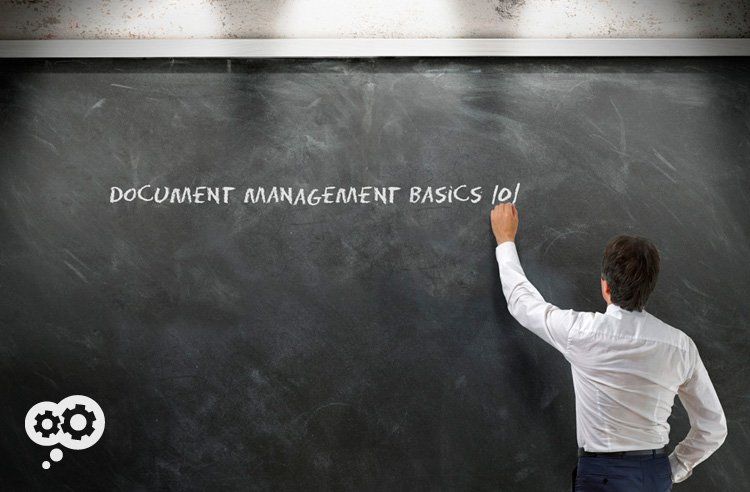
Find your documents when you need them through smart use of document management technology.
How often have you been frustrated by not being able to find the correct version of an important document? Or spent 30 minutes flipping through manila folders in a file cabinet looking for a misfiled customer invoice?
Using documents to get your work done doesn’t have to be that frustrating.
Business success today is inextricably linked to the ability to find the right information (or even have that information proactively delivered to you) when you need it.
Entire industries and life-long careers in IT are built upon that one seemingly simple statement. Of course, everyone knows that information technology is never quite as easy in reality as we’d like it to be, at least when it comes to making accessing the right information by the right person at the right time possible.
One of the most stable and effective tools you can use to enable your office to be able to find and use the appropriate information is document management.
Document Management Definition
Document management software helps organizations better manage the creation, revision, approval, and consumption of electronic (and sometimes paper) documents. The technology helps enable companies to improve usability, accessibility, and security while maintaining control over documents.
You’ll often see document management used interchangeably with workflow, document capture, enterprise content management, content management, collaboration (or enterprise file share and sync), or records management. While there is overlap amongst these different types of software tools, they each are their own product categories (but that’s a topic for another day).*
We’ve written about the potential ROI of document management before, so I’m going to spend the remainder of this post further explaining DM.
Getting Documents In – The Repository
Documents enter the software repository most frequently in one of these three ways:
- Via capture technology. This could be from scanning a paper document via your scanner or copier or capturing an electronic document, such as a fax or an email, and adding directly to the repository.
- Uploading existing electronic documents.
- Working within the document management software itself and saving directly into the repository.
Automated software (as well as manual keyword additions by workers) is used to index documents for later retrieval.
Find Documents
Documents are stored in a single repository for easy and fast retrieval via a simple search. If OCR (optical character recognition) technology is used to capture and index documents, then documents can be searched via full text (like you would search with Google, Bing, or Yahoo). Documents can also be indexed by keywords – e.g., invoice number, document type, customer or company name.
Version Control – Work on the Right Document
Check in/check out functionality allows workers to lock a content while they are working on it – checking it “out” of the repository. This prevents changes from being overwritten.
Version control allows everyone to see and compare previous versions of the document.
Audit trails provide insight into who accessed a document and what they did with it. Permissions can be established to restrict access to sensitive files, folders, and documents.
Content in Motion – Workflow
Many document management packages will have basic workflow included in the software (more sophisticated workflows are almost always an additional layer of software, from the same company or integrated with workflow software from a different vendor). Workflow moves your documents through your office for established business processes.
Documents will be captured, indexed, stored in the repository, and then added to a workflow for further action. Workflow queues work for employees so they know what they need to complete, the deadline, and the next person in the process – automatic rerouting can also be set up to allow work to “skip” someone sick or on vacation.
Administrators can view the entire process to identify bottlenecks and further streamline the process.
Documents in Your Pocket
Many document management packages now offer mobile apps for secure access to documents and workflows. Web access will allow anyone to work from anywhere – laptop, tablet, or even smart phone – through remote access via a Web browser. When not connected to the Internet, work can be done offline and synchronized once reconnected to a network.
Integration With Other Software
While smaller offices and companies are generally better off with a single product, larger companies will often need to integrate the document management system with existing systems. Look for products that will integrate into your current IT environment – and your multifunction copiers.
Stop relying on paper. It’s time for you to look into how electronic document management can save you time.
*Good starting points to learn more on the different types of technologies can be found on the AIIM and Laserfiche websites.

